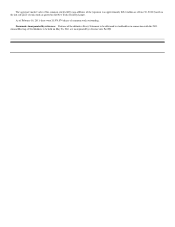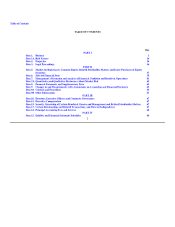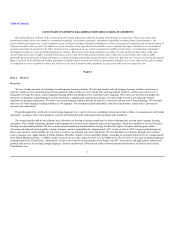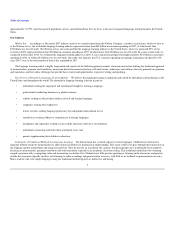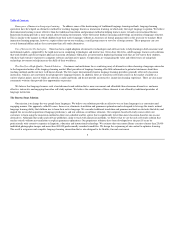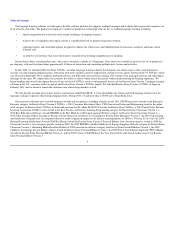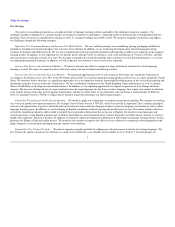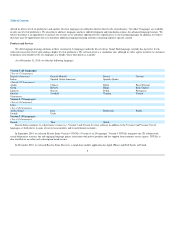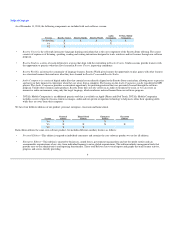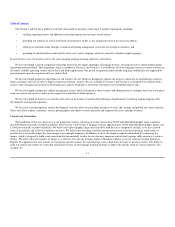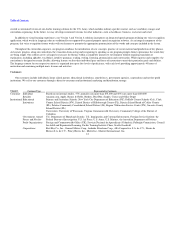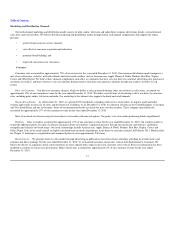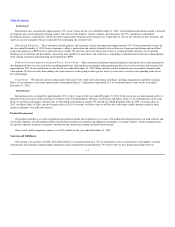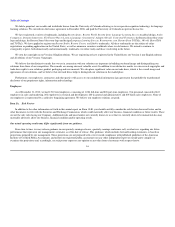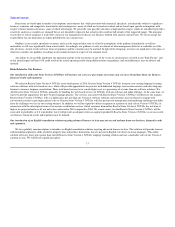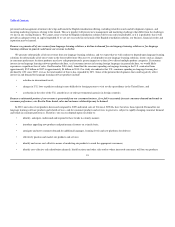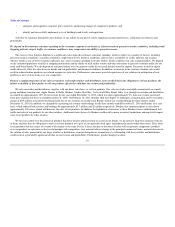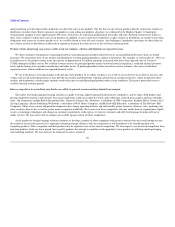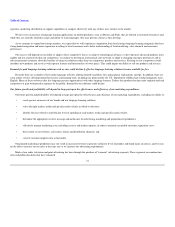Rosetta Stone 2010 Annual Report Download - page 13
Download and view the complete annual report
Please find page 13 of the 2010 Rosetta Stone annual report below. You can navigate through the pages in the report by either clicking on the pages listed below, or by using the keyword search tool below to find specific information within the annual report.
Table of Contents
Our Version 3 and Version 4 platform is flexible and capable of meeting a wide range of market requirements, including:
enabling reporting features and additional curriculum options for our home school edition;
providing our solutions in a local networked environment to enable a class management tool in the classroom edition;
offering our solutions online through a commercial learning management system for our enterprise customers; and
providing localized interfaces and help files in the user's native language, which are currently available in eight languages.
In each of these cases, the learner receives the same engaging language learning experience and content.
We have developed a speech recognition technology focused on the unique challenges of language learners, stressing non-native speech understanding
and pronunciation feedback. This technology, which is included in Version 3 and Version 4, is available for all of our languages on those versions and runs on
all widely available operating systems and on local and online applications. Our speech recognition models include languages traditionally not supported by
general-purpose speech recognition software, such as Irish.
We have developed proprietary algorithms we call Adaptive Recall, which are designed to enhance the learner's experience by reintroducing content at
longer and longer intervals in order to improve long-term retention. Adaptive Recall, available in Version 3 and Version 4, is designed to be efficient with a
learner's time, bringing material back in the program less and less frequently as the learner remembers over extended periods of time.
We have developed a proprietary student management system, which is designed to allow teachers and administrators to configure their own lesson plans
using our content and exercises and to review reports for evaluation of student progress.
We have developed an intuitive user interface that assists in the learner's transition from listening comprehension to speaking, making language skill
development an integrated experience.
We have also created proprietary content development tools that allow our curriculum specialists to write, edit, manage and publish our course materials.
These tools allow authors, translators, voicers, photographers and editors to work efficiently and cooperatively across multiple locations.
Content and Curriculum
The foundation of Dynamic Immersion is our proprietary content, consisting of a total of more than 25,000 individual photographic images and more
than 400,000 professionally recorded sound files. Each Version 3 and Version 4 language contains approximately 10,000 individual photographic images and
15,000 professionally recorded sound files. We believe these photographic images and recorded sound files are a competitive strength, as we have created
many of the pictures and all of the sound files ourselves. We believe that our images and their juxtaposition convey a universal meaning, which makes it
possible for us to broadly deploy the same images across multiple languages. In addition, we have developed a sophisticated method for sequencing the
images, which is designed to build a rich curriculum that incrementally teaches the user the most important and relevant language skills necessary to achieve
fluency. We believe that our sequence of images is as effective for someone learning Arabic or Mandarin Chinese as it is for someone learning Spanish or
English. To supplement our core content, we incorporate specific nuances for each language, such as dual forms for parts of speech in Arabic. Our ability to
tailor our content also enables us to develop customized versions of our language learning solutions to address the specific needs of various industries. For
example, we
11
•
•
•
•


